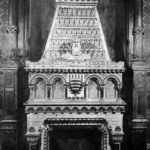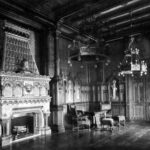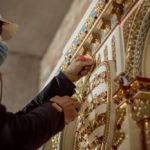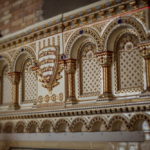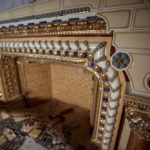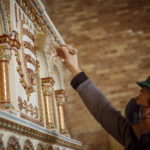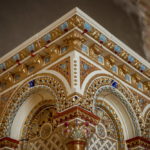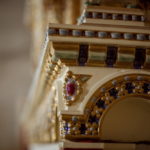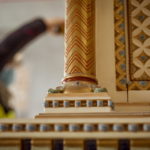The largest Zsolnay ceramic fireplace in the country is being built in the St. István Hall of the Budavári Palace; the first reconstructed historical square of the building complex will be open to visitors from August 20.
One of the jewels of the Budavári Palace is the hall named after King Szent István, which was an outstanding achievement of Hungarian industrial art at the turn of the century. Outstanding artists and industrialists of the time, such as Endre Thék, Rudolf Kissling, Gyula Jungfer or Alajos Strobl, took part in its design. The premises were completely destroyed in the Second World War, but now they are being recreated according to the original plans within the framework of the National Haussmann Program - reminded the investing Castle Authority in a statement sent to MTI on Wednesday.
As it is recalled, Vilmos Zsolnay played a major role in the creation of the Szent István room, in whose Pécs factory one of the most defining elements of the room, the pyrogranite fireplace and the bust of Szent István on the main cornice, were made.
In the Pécs factory of the Zsolnay Porcelánmanufaktúra, the specialists made a faithful copy of the original work over many years based on former samples, original plans and archival photos.
The 4.7 meter high, 2.8 meter wide and almost one and a half ton fireplace consists of 120 different elements and a total of 611 pieces; in some parts, eight or ten phases of painting, glazing and then firing were carried out before gilding. The larger-than-life bust was originally created by Alajos Strobl.
After the trial construction in Pécs, in the last few weeks, the experts started assembling the fireplace in its final location, in the reborn Szent István hall in the south connecting wing of the Budavári Palace. The individual elements are joined together with a special adhesive mortar, and in order to distribute the weight properly, the specialists have also created a durable frame structure, who will use a special stand when installing the upper parts of the fireplace.
After the reconstruction of the central ceramic structure, the extremely complex inlaid parquet made of oak, mahogany and American walnut wood, which was originally made in the factory of the Neuschloss brothers, will be installed - the announcement reports on the reconstruction.
As the Castle Administration emphasizes, the cultural and applied art value of the restoration of the Szent István hall is increased by the fact that, for the sake of authentic reconstruction, representatives of crafts that are now disappearing are involved in the creation. From Pécs to Pápá, representatives of seven professions are working on the reconstruction in around twenty workshops across the country.
The Szent István room welcomes visitors from August 20, free of charge for the first few days.
MTI
Photos: MTI/Várkapitányság

